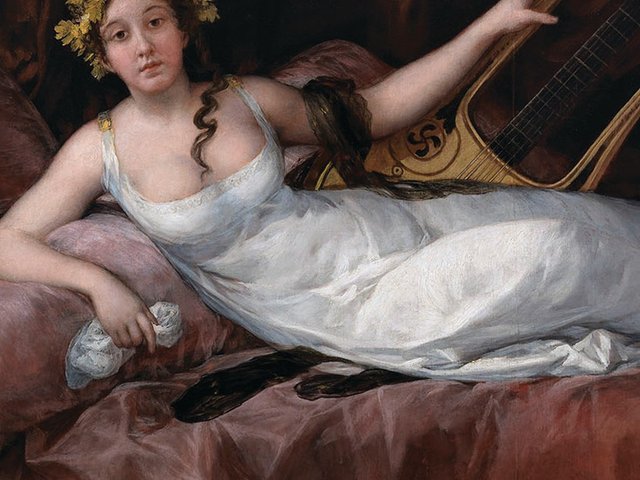Many of Goya’s portraits are in private collections in Spain, still owned by the aristocratic descendants of the dukes and duchesses who sat for the largely self-taught artist. The family resemblances are sometimes striking. “I suggested to Paris Match that they do a feature,” jokes Xavier Bray, who has organised Goya: the Portraits, which opened at the National Gallery to excellent reviews last week.
Bray has secured hard-to-get loans from Spain before. The chief curator of Dulwich Picture Gallery in south London, he was formerly a curator at the National Gallery, where, in 2009, he organised The Sacred Made Real, an exhibition that paired Spanish religious paintings and sculpture. “That was dealing with the Spanish Church. This was dealing with another segment of Spanish society: the aristocracy,” Bray says.
Goya began to paint portraits quite late in his career, and was in his 30s when he received his first official commission. The artist went on to paint three generations of the Spanish royal family, aristocrats and statesmen, as well as like-minded intellectuals and priests, before his death in 1828, aged 82. “It’s not the nightmarish Goya of his subconscious, it is Goya interacting with his contemporaries,” Bray says. “He never fell into the trap of being a society portrait painter. He seems to know a lot and is aware of the situation. That constant tension is something we find very contemporary. It gives Goya’s works an incredible modernity.”
Goya’s portraits foreshadow those by Manet, the young Picasso, Lucian Freud and Alice Neel in the way he penetrates outward appearances to convey his sitters’ intelligence, or lack of. That said, he never crosses the line into satire or overfamiliarity, as many have imagined. “There are so many myths surrounding him—that he was mocking his sitters or that he was the lover of the Duchess of Alba,” Bray says. He also dismisses the idea that Goya was a die-hard republican.
The artist became the first court painter and remained so during the Napoleonic wars, the French invasion of Spain and the restoration of the Bourbons. Like Picasso during the Second World War, Goya was a great survivor.
No exhibition of Goya’s portraits would be complete without a portrait of the Duchess of Alba, a beautiful, charismatic and extremely wealthy woman whom the artist knew well. Goya captures her wilfulness and authority in a 1797 portrait of her wearing a black dress (he kept the work in his collection). Bray was able to secure the painting from New York’s Hispanic Society of America—only the second time the institution has lent the work abroad. The loan would probably not have happened without Philippe de Montebello, the former director of New York’s Metropolitan Museum of Art and now the chairman of the Hispanic Society.
In Madrid, Goya’s portraits are inevitably overshadowed by his great war paintings—The Second of May 1808 in Madrid and The Third of May 1808 (The Executions) (both 1814)—and by the Black Paintings. To appreciate his prowess as a portrait artist, London is the place to be.


